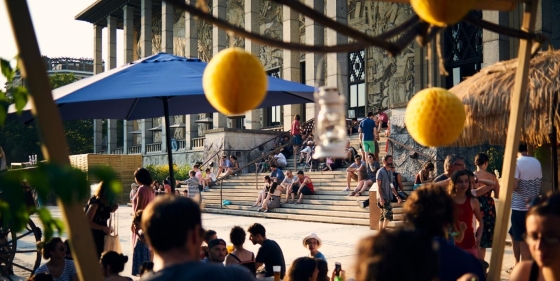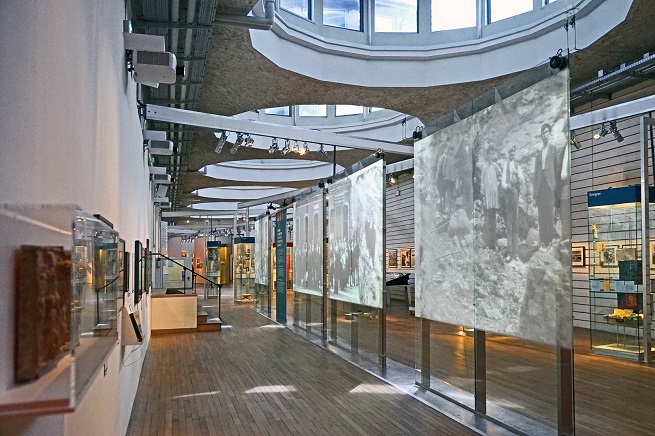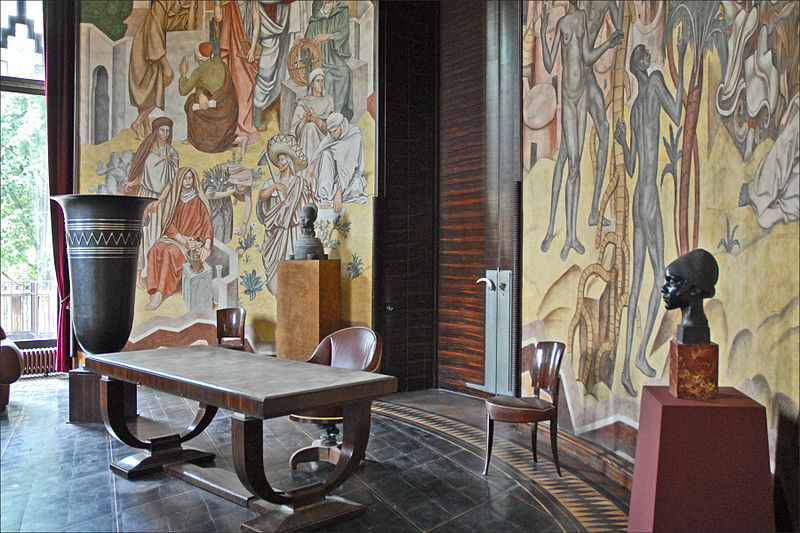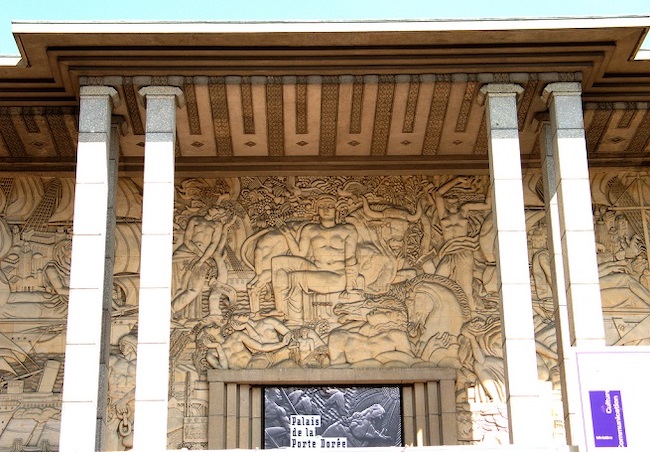Ghost in the Shell: The Museum of Immigration
- SUBSCRIBE
- ALREADY SUBSCRIBED?
BECOME A BONJOUR PARIS MEMBER
Gain full access to our collection of over 5,000 articles and bring the City of Light into your life. Just 60 USD per year.
Find out why you should become a member here.
Sign in
Fill in your credentials below.
The Museum of Immigration in the 12th arrondissement is re-opening the summery pop-up café on its esplanade. From May 17 to October 7 visitors can relax at the “Palazzo”, which is equipped with beach chairs and umbrellas, in the midst of somewhat goofy but pleasant sculptural décor. Already when you arrive at the Porte Dorée (there are both metro and tram stops), the double row of palm trees straddling a fountain lends a tropical ambience. (The “dorée” in the name comes from the gilded statue of Athena overlooking the palms and fountain).

“Palazzo,” the terrace at the Palais de la Porte Dorée/ Immigration Museum
Generally speaking, the Museum of Immigration is a well-meaning but rather unglamorous establishment specializing in exhibitions about diverse aspects of the French melting pot. As an American descended from 20th century immigrant stock I found an exhibition some years back of Ellis Island photos to be genuinely edifying. But there’s more to the museum than meets the casual eye. The Palais de la Porte Dorée at one time housed the Museum of African and Oceanic Art, and was the jewel of the 12th. In 2006 the contents were transferred to the new Musée du Quai Branly, Jacque Chirac’s dream project. The beloved old museum became a shell of its old self, an irksome development for some: shifting an important cultural treasure from the eastern periphery to the privileged center and benefiting a politician’s vanity, not to mention seeing the artwork sometimes framed in a popularizing but cheesy “Bwana, Mikumbi” light.

photo: Jean-Pierre Dalbéra
What makes the museum fascinating is the ghost that resides in the shell. The Palais looks like an imposing, art deco Roman temple, except that its enormous façade (designed by Alfred Auguste Janniot) is covered with bas-relief carvings of African scenes: teeming Bwana Mikumbe in your face. (It was created for the International Colonial Exposition of 1931, when the French Empire was at its peak.)
More imperialist artwork awaits the visitor inside. In the large exhibition hall that’s now called The Forum (previously it was the Salle des Fêtes), there’s a mash-up of exotic styles, featuring pagoda-like ceiling above, riyadh-like arcades below, and a Roman-like mosaic floor. Decorating the walls of the Forum is an amazing collection of pastel frescoes in a delirious style that evokes a mix of the Douanier Rousseau and Picasso’s neo-classical period. The frescoes are meant to illustrate the meeting of France and the exotic world resulting from the mission civilisatrice of colonizers, explorers, missionaries, and of course, soldiers. There are obvious symbols (eg nurses ministering to African children) as well as mythical motifs and just plain odd images (a New York skyscraper set in the jungle).
Across the way from the museum, in a grassy spot separating the roadway, is a stone stele etched with a frieze of a French expedition up the Congo. Very Kiplingesque, a guilty pleasure to some, offensively imperialistic and racist to others. It was vandalized with graffiti a while back in an incident that recalled attacks on Confederate monuments in the US. But both façade and frieze are bluntly truthful about the past, and evocative in a troubling way. It’s an ambiguous mix of Kipling and Joseph Conrad. The forms give a stark counterpoint to the social pedagogy of the museum, to say the least.

photo: Jean-Pierre Dalbéra
There’s also a modest aquarium in the museum that makes it a nice destination for those with children. But even the “tropical aquarium” as it’s called is redolent with historical baggage. The star of the aquarium is a large alligator that usually stays very still on a stone island in its pool. You would think it’s not alive, incapable of movement—until, that is, it decides to move. Near the museum is the Vincennes zoo. In another irony, it was closed for years because its old set-up was judged cruel to the animals. It’s since re-opened, another edifying place for the kiddies.
Musée national de l’histoire de l’Immigration
293 Avenue Daumesnil, 75012 Paris. www.palais-portedoree.fr
Lead photo credit : photo: Sandra Cohen-Rose and Colin Rose





REPLY